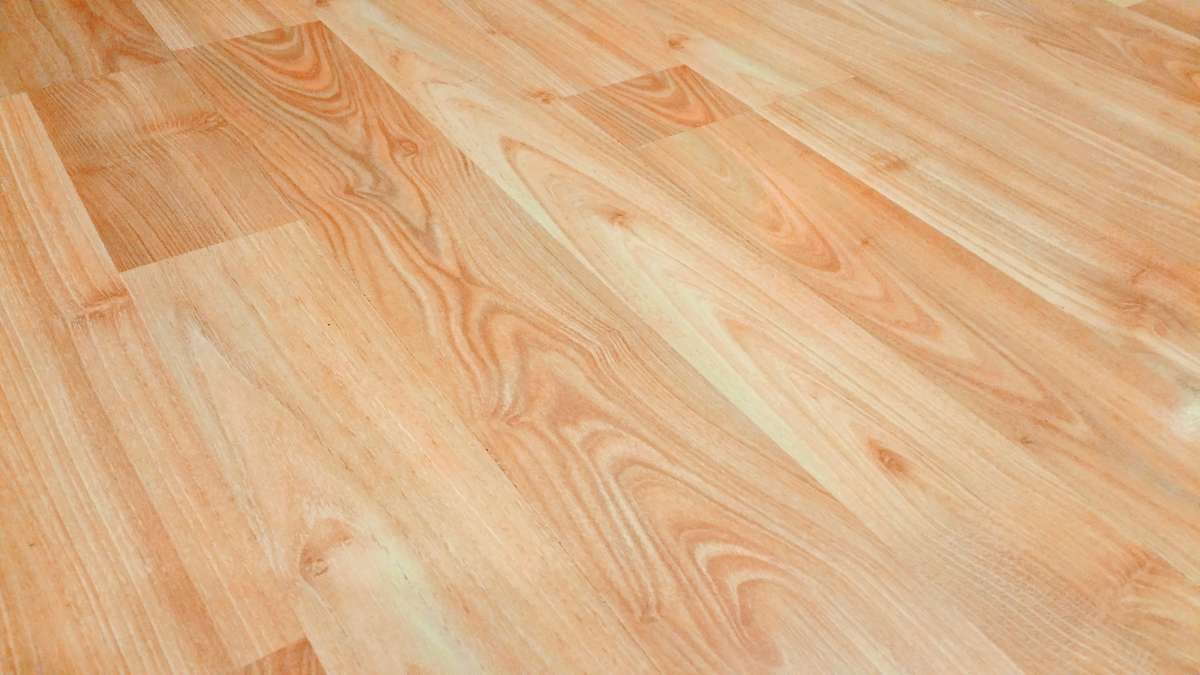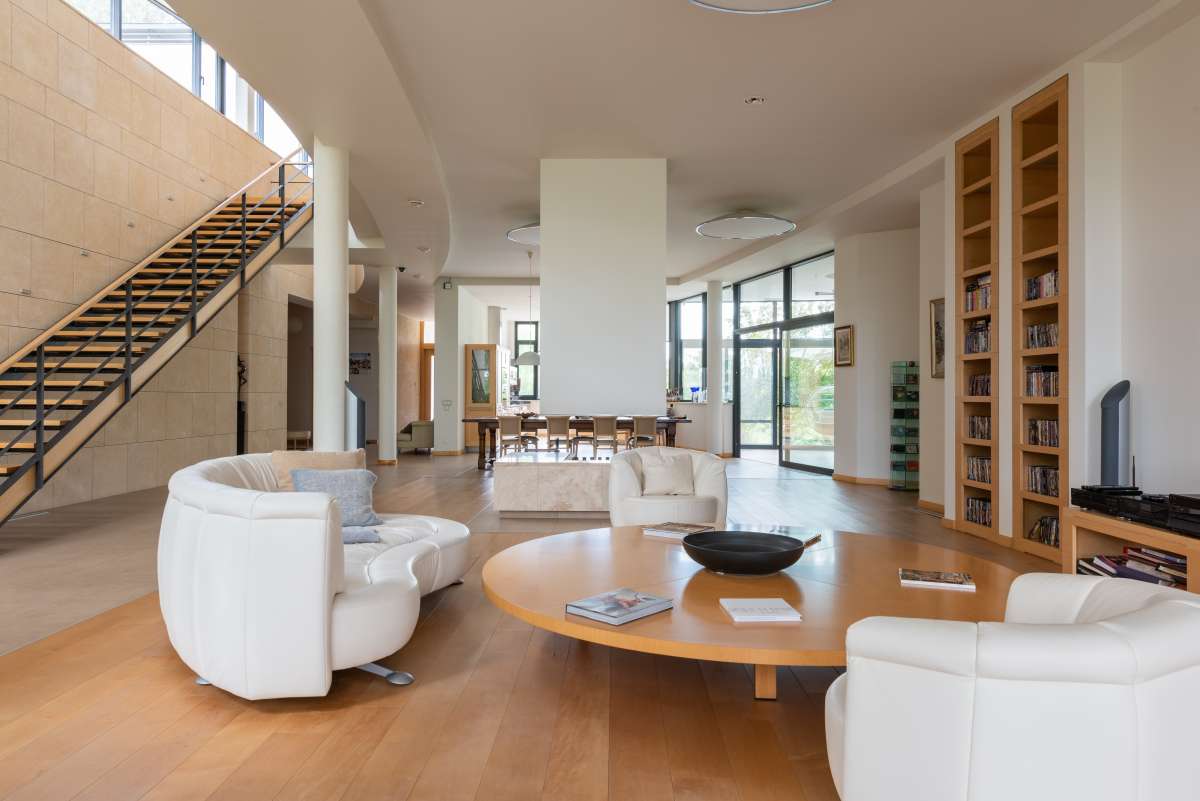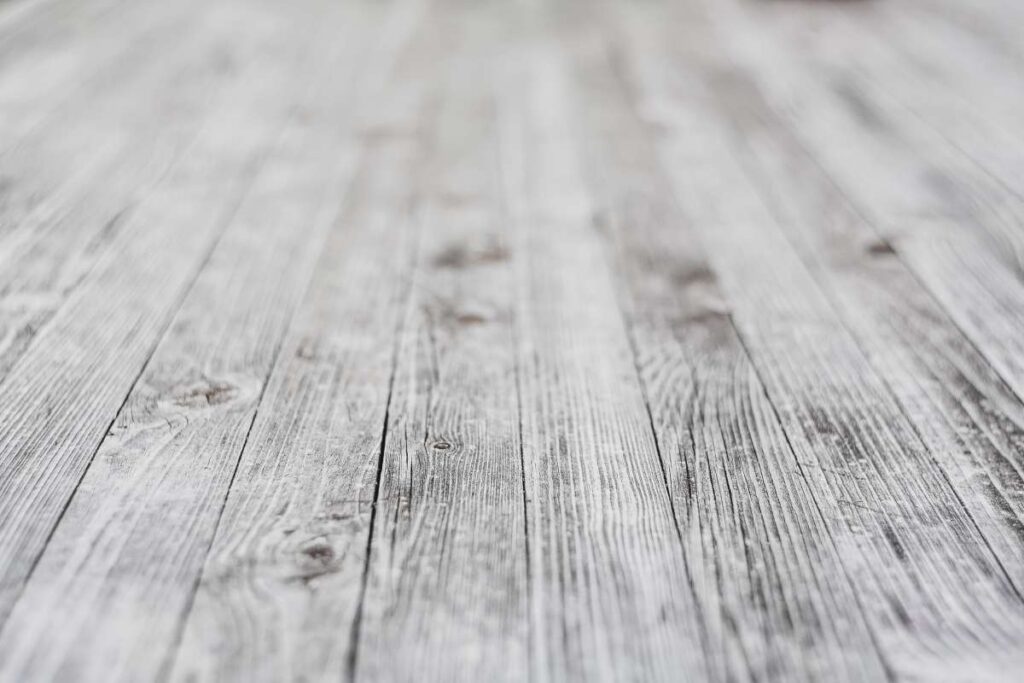Put, hardwood flooring is a floor constructed entirely out of hardwood. Timber is the material of choice for most homeowners because of its beauty, durability, and extended lifespan.
Now that timber prices have dropped, many people are considering redoing their floors. If you're considering switching to wood floors, this information might be helpful.
Wooden floors are common in residential construction for many reasons. Several illustrations are presented below.
After each use, wipe it down.
Hardwood flooring requires less upkeep than carpeting. A simple weekly sweep and mop should do the trick.
The smooth wood surface won't collect allergen-triggering dust or pet hair. The floor will not be damaged if wine and juice are spilt on it and swiftly wiped up.
The more time passes, the more stunning it becomes.
The beauty of wood flooring can increase with time. The occasional gouge or scrape in the floors will only enhance your property's unique character.
A professional timber polishing solution can remove imperfections and restore the floor's lustre if desired.
It's beautiful, plain and simple.
Any wooden flooring will add to your home's already stunning aesthetic appeal. You can get timber floors in a wide variety of colours and tones, so you can choose one that appeals to our sense of style and blends with the rest of the room's furnishings with confidence.
Many different kinds of wood flooring are available, and some are even fairly inexpensive.
Timber flooring is made from real wood and other natural materials. Hardwood flooring, or just wood flooring, is another common term. Timber flooring is an artificial product that is warm and comfortable to walk on due to the use of real wood in its construction.
- Many wood planks are stacked together to form a single floor.
- It has a variable number of layers
- Three-layer and multilayer items are currently trending in the market
- Buildings with even numbers are more common than those with odd ones. Yet, this doesn't imply that the number must be odd.
- Layers of top, middle, and bottom make up engineered wood flooring.
When looking for a new floor for your house or business, "wooden flooring" is a safe bet. The variety of colours, textures, and finishes available in wood makes it a classic and ever-popular choice.
It could appear strange to put "timber flooring" in quotation marks. Yet, despite the proliferation of cutting-edge wood flooring as hybrid decking as engineered timber floors, most people still use the phrase "timber flooring" to refer to any flooring that resembles wood. However, that "timber floor" we speak about is rarely constructed from real wood.
Many "timber" on the market around the turn of the century was one of these non-timber variants, which had many advantages over natural solid timber, including waterproofing and lower costs. At Hitch Property Constructions, we offer timber repair work from simple timber repair to almost new structures, renovations, and extensions.
Traditional Wooden Floors

The above table distinguishes between unfinished and pre-finished wood flooring.
Concerning wood flooring, the term "unfinished" indicates that the material is sent to the construction site in its raw form. The process entails both on-site sanding and painting. In addition, unfinished floors usually have a water-based coating.
Pre-finished wood flooring comes with a surface finish already applied and can be shipped directly to the construction site, saving time and effort during installation. In addition, as the coating was applied at the factory, no sanding or coating will be required at the job site. In most cases, UV Coating is used for pre-finished flooring.
Comparison of Solid Wood and Engineered Timber Floors
Compared to wood veneer, which is constructed from many pieces bonded together, the production method for solid wood flooring is far more straightforward. As a result, engineered wood flooring is a three-layer construction wood product with an outside layer, an inner core, and a bottom layer.
Choose a Flooring Material and Install It Wherever You Want! The floors should look natural whether you choose real wood or manufactured lumber. There is an abundance of flooring types to choose from while redecorating your home. However, solid wood flooring must be laid at or above ground level. The bathroom is the only room in the house that shouldn't have engineered timber flooring.
Why Wood Is Finest Natural Material
Peace that Calms
It's nice to have a timber floor since it keeps the house warm when it's cold and cool in the summer. In addition, thousands of microscopic air pockets are packed into just one square centimetre of wood, making it an excellent insulator in its natural form.
Take off their shoes and enjoy the plush carpet or hardwood below your feet.
Timber flooring is warmer, either laminate or PVC vinyl, and it is seven times better at insulating against the cold than ceramic tile.
One may observe countless small air chambers by examining wood under a microscope.
Easy Going
Without wood floors, basketball merely wouldn't be the same. Dancers favour wooden flooring because of their stability and responsiveness. The feeling of walking around all day on wood floors is similar to wearing a pair of Nike Air Max shoes.
Comfortable Touch
During the winter, switching from the softness of wood flooring to the cold hardness of hard ceramic or marble could be a rude awakening for your feet. Is it feasible to believe that one of these buildings has a colder basement than the others? You didn't just make something up out of thin air. In terms of the rate at which they transfer heat, marble floors are over 10 to 20 per cent worse than wooden ones. The K-value, which is not widely known, ensures that flooring is always soft underfoot. The thermal conductivity of a material is measured by its K-value. A lower K-value indicates a better insulating material. Wood has the highest K-value of all commonly used materials. We have an extensive range of home repairs in Melbourne services at Hitch Property Constructions.
Different Types of Hardwood Flooring
Classic, Solid-Wood Floors
Single strip timber flooring is typically installed in one of four ways: directly between joists, fibreboards with wood across joists, plywood and battens over slabs, and sometimes straight to the concrete slab.
Hardwood flooring has always been a popular choice because of its timeless appeal. During their existence, solid strip timber flooring can be sanded or refinished to restore them to near-new condition. In addition, it is useful for a new building and remodelling projects that need matching existing flooring because it may be topped (face) nailed or buried fastened using adhesives.
Advantages of Solid Wood Floors
- Luxurious and genuine in appearance and feel, solid wood flooring is easily distinguished from imitations. You may have the floor with all the charm and personality of wood, with the assurance that it will last a lifetime of foot traffic. Nothing is lacking in these flooring options.
- They're Forever: Because the planks are virtually one piece of wood, they can be sanded & repolished together, all down to the glue that holds them together. Years of dirt and grime can be removed by simply wiping your solid wood floor, returning it to its original form. Solid timber floors may be sanded numerous times before revealing signs of wear, and they are also more durable than alternatives like manufactured wood flooring.
- Hard and level, solid wood floors don't trap dirt and dust like carpets and rugs, so they require less cleaning and care. Sweeping or sweeping the surface occasionally is generally enough to maintain the appearance excellent.
- Durable: Solid wood floors are protected from dents, scratches, and other types of wear and tear by a protective finish. This makes them ideal for the loungeroom, which guests frequently traverse.
Solid Wood Floor Problems
- Surface not as robust as others: Solid wood flooring can easily endure the traffic your home experiences, including that from curious animals and busy children. However, if you're looking for a surface that can endure high moisture conditions or heavy foot activity, artificial flooring alternatives like laminate, mix, and vinyl could be more feasible. These floors use coatings like aluminium oxide, which is extremely scratch resistant.
- Cheaper alternatives The slow rate at which the necessary trees grow drives up the cost of solid timber flooring, making it more expensive than alternative options. However, while the upfront cost of installing a solid wood floor may be more expensive, its long-lasting quality and classic appeal quickly pay for themselves.
- Since there is moisture in the wood pulp, solid timber floors will grow and shrink naturally with the seasons. Little gaps should be left between planks during installation to reduce the likelihood of squeaking and buckling.
Engineered Floor
Engineered floors have thin layers of wood, called veneers or lamellae, attached to the top of the subfloor. This is beneficial for the floor's stability and maintains the floor's authentic-looking wood appearance.
Modern manufacturing facilities employ many coating technologies that highlight colour, grain, and other textures to create panels with jaw-dropping aesthetic effects. While the bulk of engineered flooring is sold pre-finished, several varieties are designed to be sanded & finished after installation.
Engineered flooring can be put as a solid floor that is fastened to battens, as a floating floor that does not require any subfloor preparation, or as an overlay that is affixed to the subfloor. Tongue-and-groove and glueless joining technologies are both available. Pre-finished engineered flooring, once placed correctly, can be used right away.
Engineered wood flooring's many benefits

- Engineered wood floors are more cost-effective than timber frame floors. Therefore, less wood is used in their production. You appear to be doubting the apparent ease of the solution. Of course! Compared to a solid wood floor, an engineered wood floor is virtually indistinguishable in appearance and quality.
Increased steadiness: Because of their layered design, engineered wood flooring are exceptionally durable. What exactly does this imply, if you will? Yet, wooden floors can expand, compress, or even warp when the wind takes a severe swing. However, engineered timber floors only experience creaking when subjected to the most extreme situations, so they are a better option overall. - Superior polish and finish: You can't tell the difference between a solid wood floor and a manufactured wood floor by looking at the floor's surface. Wider flooring (over 100 mm wide!) is possible with engineered timber floors due to their stability. Wider floors are ideal if you want to highlight the wood's natural grain and personality.
- Low-Maintenance: Hardwood floors can sometimes be impenetrable thanks to the thick protective coatings applied during pre-finishing. This will make it much easier to keep the area clean by preventing dust and debris from getting into cracks.
Don't panic if you notice wear and tear on your flooring. Engineered wooden floors can usually have their top wood surface resanded twice or thrice before showing signs of wear.
Problems with Engineered Wood Floors
Although engineered timber floors are made to last, they do not have the same longevity as solid wood floors due to a few variables. One potential issue with engineered wood flooring is delamination, which happens when the glued layers separate. This issue can be caused by defective construction or water seepage underneath the floor. Another factor that can shorten the life of engineered wooden flooring is the low wood content. Since it is not solid wood, its floor can only be refinished a few times.
Could Release Gases: VOCs (volatile organic compounds) that are harmful to humans can be released from the glue used to create an engineered wood floor (VOCs). Get in touch with the flooring company for further details about your particular floor.
Parquetry
Buying a wide variety of parquetry, including solid block, pre-finished and raw-engineered chevron, and Versailles panels, is possible. The versatility of parquetry in terms of block orientation, shape, etc., species. Enables the production of one-of-a-kind floor patterns.
Floating flooring, like solid strip timber floors, can be refinished multiple times over the course o their lifetimes.
Both Fixed and Moving Floors
Each floorboard on a fixed floor is fastened to the subfloor by nails, staples, or adhesive.
This is known as a floating floor when floorboards are attached but not to the subfloor. Tongue and groove-profiled goods require adhesive injected in the wood joints to keep them in place, in contrast to most brands of floating floors with a glueless, interlocking jointing mechanism.
When set one by one over the underlay, the planks resemble a raft and "float" on the subfloor. Unlike solid wood floors, which must be attached to the subfloor, laminating, cork, or parquet floors can be installed without this step.
Except for engineered composite bamboo carpeting, which may be floated or hammered down, all other flooring types must be floated. So instead, bamboo tends to be floated.
Overlay Flooring and Structural
When properly attached to joists and battens, a structural floor can bear the weight of people walking on it. The most common flooring utilised nowadays is an overlay laid on top of an existing floor made of particleboard or concrete. Solid timber flooring of at least 19 mm in thickness is commonly laid as an overlay in addition to its structural function.
Bambo Wood Flooring
Although technically speaking, bamboo is grass and not a tree; this does not negate the fact that it is a great building material. Furthermore, due to its high growth rate, eco-conscious individuals often favour bamboo.
Recycled Wood Floors
These planks are made from recycled wood. These boards are usually cleaned after being rescued from abandoned buildings like barns and houses. The worn and imperfect wood pieces you receive (such as nail holes, knots, or tiny stains) bring character to any home.
Hardwood Flooring
This sort of hardwood flooring represents the most luxurious and pricey choice. Flooring made from hardwood trees is more expensive than other options because the slower growth rate of these trees allows for the creation of flooring with a finer, more attractive grain. At Hitch Property Constructions, we offer a wide range of home renovations.
FAQs About Timber Floor
Timber flooring is a type of flooring that is made from solid hardwood or engineered wood planks that are designed to be installed on the floor of a building. The planks are typically made from a variety of hardwoods, including oak, maple, and walnut, and are available in a range of finishes and styles.
Timber flooring has several benefits, including its durability, natural beauty, and versatility. It is also easy to clean and maintain, and can add value to a property.
The lifespan of timber flooring can vary depending on a variety of factors, including the quality of the wood, the installation process, and the level of foot traffic the flooring is exposed to. On average, timber flooring can last anywhere from 25 to 100 years with proper care and maintenance.
Yes, timber flooring can be installed in bathrooms and kitchens, but it is important to choose the right type of timber and finish to prevent water damage. It is also important to seal the floor properly to protect against moisture.
The cost of timber flooring can vary depending on a variety of factors, including the type of timber, the quality of the wood, and the size of the space to be covered. On average, the cost of timber flooring can range from $30 to $150 per square meter, including installation.

